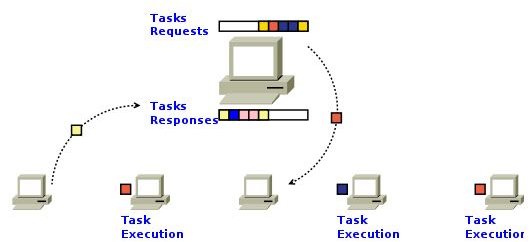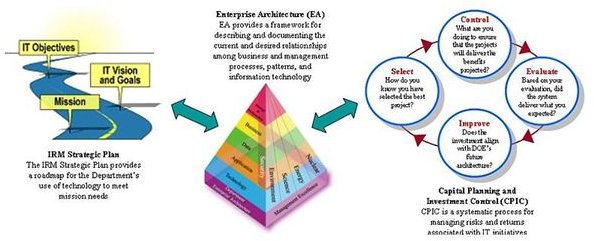Specific GAAP Accounting Rules for Capitalizing Costs: Better Standards Than IFRS?
Quick Review of the Guiding Principles
Cost capitalization is observed if a major expense merits recognition as an investment of capital funds instead of being recognized as an expenditure for the year. Related policies are largely based on the function of the asset purchased or the purpose of the expenses incurred. There is the matter of determining if the costs can be harnessed to benefit future objectives and not just the day-to-day operations, as opposed to administrative and operating expenses. The latter are incurred in order to sustain the daily operations within a particular calendar or fiscal year, regardless if the amount involved is substantial or minimal.
Inasmuch as the principle of “future years’ benefits” is a consideration when recognizing an expense as an asset; the acquisition value will be depreciated or amortized for more than a year. The length of time involved in spreading out the benefits is referred to as the useful life or the economic life. The most common methods of depreciation used are the straight-line method and the accelerated method.
All of these can be easily applied if there are uniform guidelines to observe. Since businesses utilize different kinds of depreciable assets and amortizable expenses, the Financial Accounting Standards Board deemed it best to institute specific GAAP accounting rules for capitalizing costs.
The Rule On Loan Origination Costs Incurred by Financial Institutions

Substantial expenses paid for loan origination costs are deferred by capitalizing the outlay. The recognition of expenses will coincide with the realization of the income generated by the loan.
Origination costs are the related expenses incurred by financial institutions in processing loans extended to borrowers. Appraisal and inspection expenses, property and credit checking, including allocation of employees’ salaries involved in loan processing, are some examples of this expense.
For lenders, the transaction involves the creation of receivable accounts, which are assets by nature and may either be short term or long term. In these cases, only the loan origination expenses that pertain to long-term receivables qualify as capitalized expenditures. They are amortized over the term of the loan, based on the principle of matching expenses against the income gained from processing the loan.
Principles for Overhauls, Repairs or Maintenance of Assets

The same principle of “future years’ benefits” applies when determining if the overhaul, repair, and maintenance expenses that will be added to the assets’ book value. However, it is important that the company sets specific policies on how major expenditures for plant, property, and equipment should be treated in their books, inasmuch as the principle of “consistency” is a significant rule that should be adhered to.
An expense is added to the book value of a particular asset if it prolongs or extends the remaining life of the equipment or machinery. The related depreciations are likewise spread over the lengthened life to address the expense recognition The accounting entry involves a debit to the asset account and a credit to cash or accounts payable, whichever is applicable.
Another accepted method is to reduce the accumulated depreciation of the asset; which is often applicable for major overhauls or cost of replacement parts for motorized vehicles. The underlying reason for the use of this method is the enhancement of the serviceability of the asset, and not necessarily prolonging the length of its services. The accounting entry for this type of approach is as follows:
Dr. Accumulated Depreciation (Asset Type)_________
Cr. Cash or Accounts Payable __________
The effect of this accounting entry is reflected in the presentation of the net book value, while its acquisition or historical cost remains unchanged.
The matter of defining the materiality of the amount is important when establishing policies for capitalized expenses. Vehicles may require certain replacement parts that enhance serviceability. However, one has to consider the proportion of the expense against the income generated by determining if the expenditure has minimal impact or is regarded as an ordinary occurrence.
The classification of improvements should have clear-cut policies to maintain consistency. Under GAAP’s capitalization rules, an air conditioning unit is classified as equipment to be depreciated according to its allowable estimated life. This stands opposed to the installation of a centralized air-conditioning system, in which the related costs are added to the value of the building and depreciated according to the allowable remaining life of the building.
When to Capitalize Interest Expenses on Borrowings

Interest expenses on borrowings are eligible for capitalization if said borrowings were used to finance long-term project costs. The principle of matching “cost against revenue” is the underlying tenet that governs this rule, and not necessarily the principle of “future years’ benefits.” Inasmuch as the interest expense involved is substantial, but with no revenue existing to match the cost incurred, recognizing it as expenses for the year will result in an understatement of income for the said year. Hence, generally acepted accounting principles require that the interest expenses on borrowings related to long-term project investments be capitalized.
The recognition of expenses does not have to be identified with a specific debt if multiple borrowings are considerations. Calculate the weighted average of all interest outlays during the year and apportion the interest between those that were paid for long term projects and for those attributable for purely borrowing purposes. This can be illustrated via the following accounting entries:
(1) Original entry for payment of interest expenses where amount is based on actual expenditures incurred:
Dr. Interest Expense on Borrowings __________
Cr. Cash __________
(2) To capitalize interests paid for long-term borrowings on project investments.
Dr. Construction in Progress –Building _________
Cr. Interest Expense on Borrowings _________
Cost Considerations for Internally Fabricated or Developed Assets

Internally fabricated or developed assets pertain to tools like dies, punches, and cutters used in manufacturing to aid in the process of production. They are recognized and counted as among the machinery and equipment that are depreciated over their allowable useful lives.
On the other hand, only the following costs related to investments on website and software development are capitalized:
- Internet domain names,
- All costs related to software development during application and upgrading stages, and
- Testing and installation costs as well as computer and other testing supplies that make the evaluation possible.
Amortizations of these capitalized expenditures are made over the estimated useful lives and are subject to review for purposes of determining if technological trends require the recognition of impairment costs.
Putting It All Together…
As a summary, the GAAP accounting rules for capitalizing costs are generally based on the principle of “future years’ benefits” but are not strictly limited to this. Other underlying principles like “consistency” and “matching of cost against revenues” come into fore as better considerations for the fair presentation of an entity’s financial statements. The matter of inconsistency will open avenues for financial presentation manipulations, while unmatched revenues or expenses can result in under- or over-statement of the annual income.
The move to adopt the International Financial Reporting Standards (IFRS) is still unresolved due to its differences versus U.S.GAAP guidelines. There are those who maintain that mere convergence will suffice to meet the objectives of the Securities and Exchange Commission. There are many financial statement users and institutions who uphold the rules of US GAAP as better standards in financial reporting over the more relaxed rules of the IFRS.
Reference Materials and Image Credit Section:
References:
- From the Free Library: “The IRS to Concede Capitalization of Loan Origination Costs under Prop”
- Needles et al, Principles of Accounting
Image Credits:
- US DOE, Capital Planning and Investment Control / Wikimedia Commons
- By Joe Mabel / Wikimedia Commons
- By Xnatedawgx / Wikimedia Commons
- By Lewis Hine / Wikimedia Commons
- By Ms209495 / Wikimedia Commons
